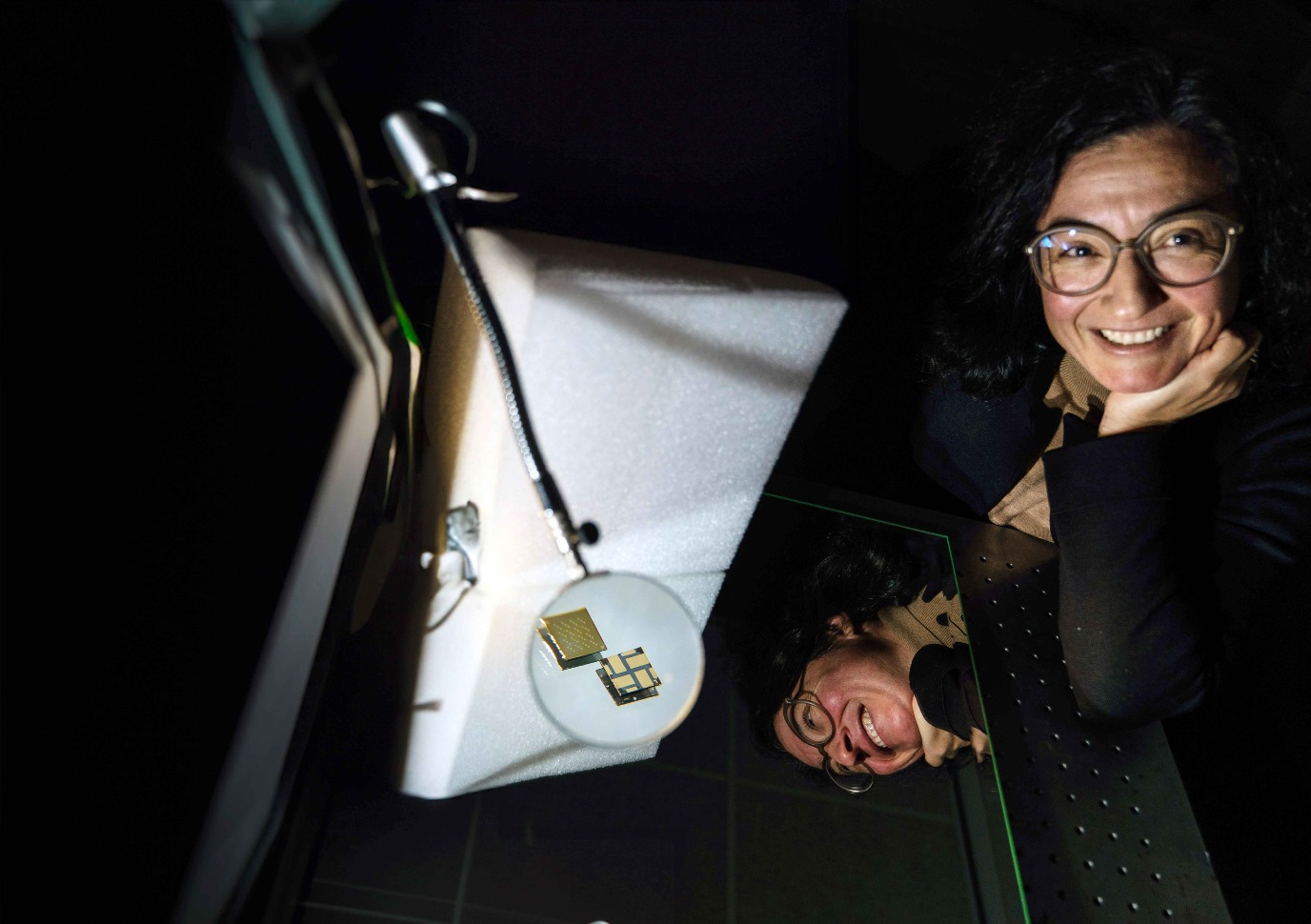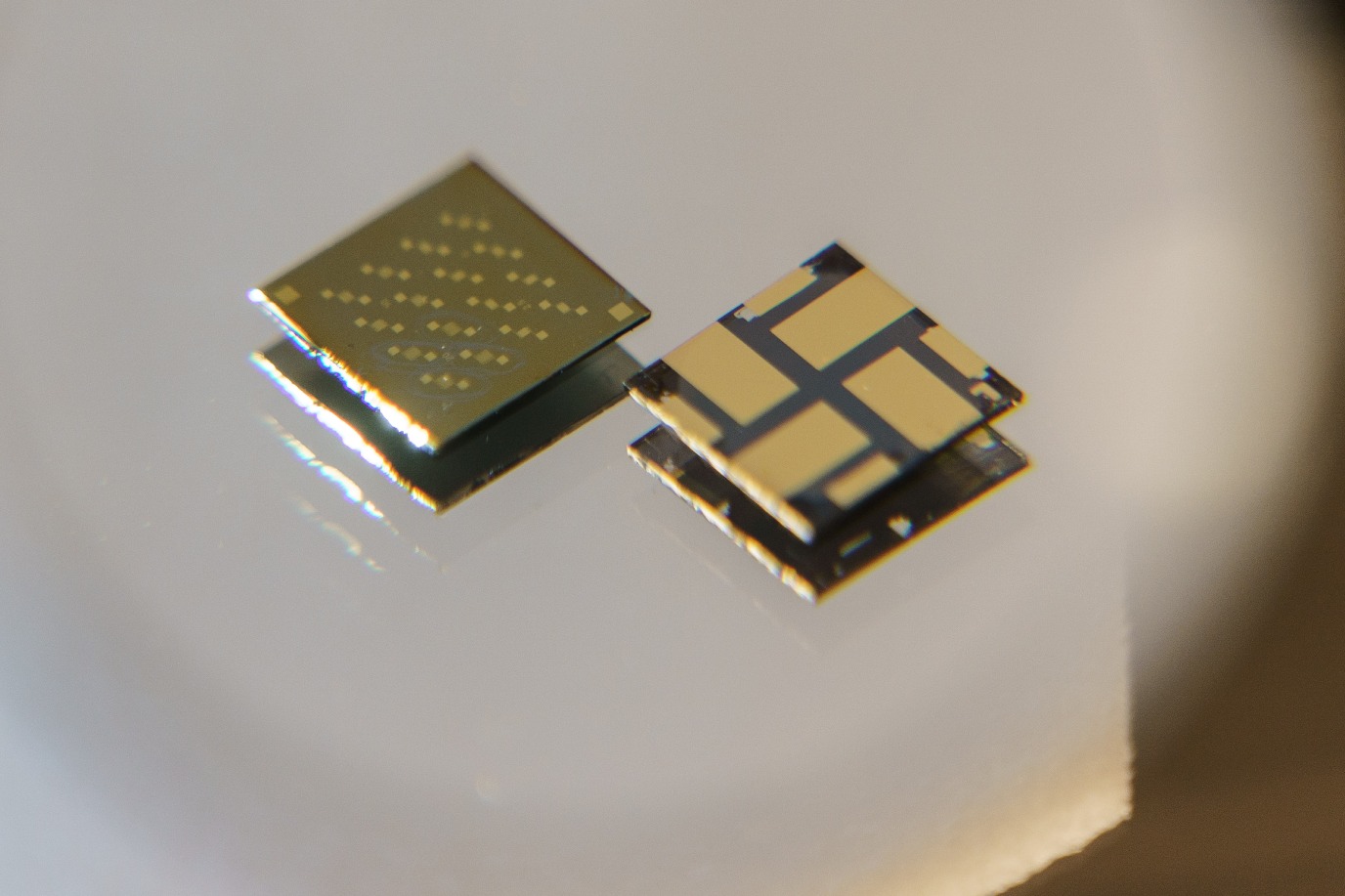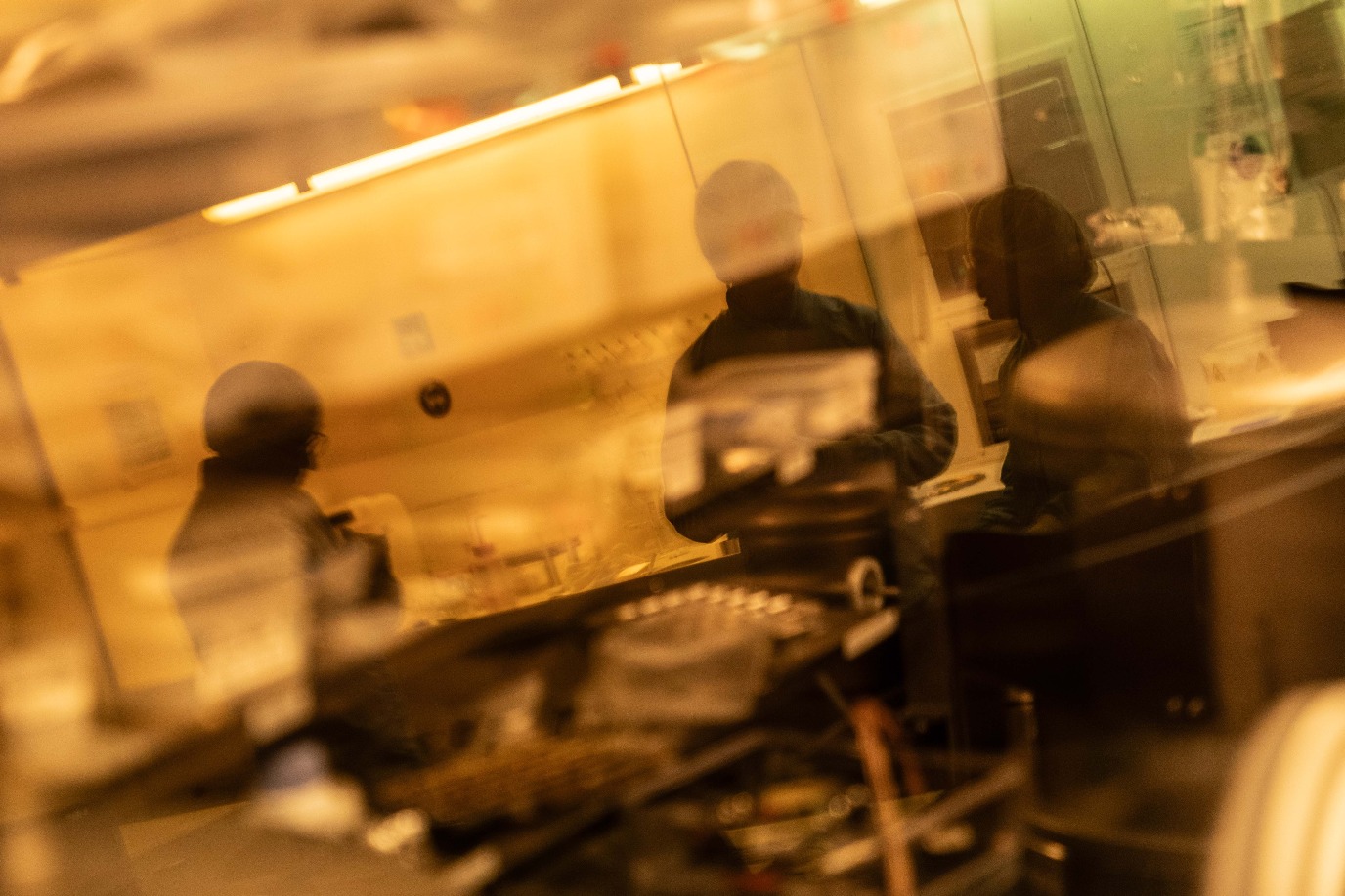Night vision with artificial atoms
Through the magnifying glass, we see a thin plate covered with quantum dots: semiconducting particles with very special properties owing to their tiny size. Professor Maria Loi uses them to ‘see’ in the dark since they can be used to make digital infrared cameras.




Quantum dots are sometimes called artificial atoms, even though they are, in fact, tiny crystal structures made up of a few thousand atoms. At this small scale, the properties of the material are governed by quantum effects. By choosing the right material and very carefully controlling the size of the quantum dots, scientists are able to play around with these effects. Loi explains: ‘By changing the size, you can obtain properties that this material does not have in nature.’
In 2023, the quantum dots were worth a Nobel Prize, and they’ve already found their way to technical applications. QLED-screens, for instance, use quantum dots to emit light of a specific colour. The larger quantum dots emit red light, and the smaller dots green.
Loi uses quantum dots to detect light: when light of a specific colour shines on the material, the dots generate an electric signal. This principle can be used to make a digital camera. In Loi’s lab, quantum dots are poured onto an electronic plate in the form of a liquid ink.
Loi: ‘Our main result is that we can make these quantum dots inks very stable, even the larger ones. Because of their larger size, they are sensitive to infrared light.’ And this sensitivity to infrared light makes it possible for a digital camera to ‘see’ in the dark.
Text: FSE Science Newsroom | Charlotte Vlek
Photos: Reyer Boxem
Every two weeks, UG Makers puts the spotlight on a researcher who has created something tangible, ranging from homemade measuring equipment for academic research to small or larger products that can change our daily lives. That is how UG researchers contribute to the solutions for big scientific and societal challenges.
For decades, engineering teaching and research at the UG has been part of a wide array of strong disciplines, and from a national point of view, our collaboration with the four technical universities is becoming more and more intensive.
Previous portraits of Makers can be found on the overview page .
More information
More news
-
11 December 2025
Stormy planets and an unexpected atmosphere
-
09 December 2025
University of Groningen Professor at COP30: ‘There is always drama’
